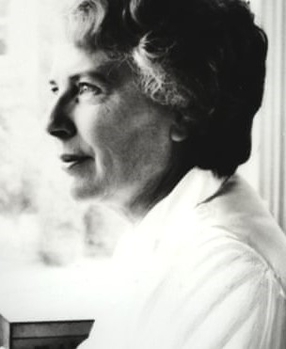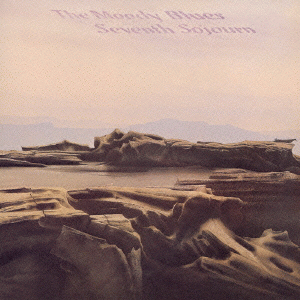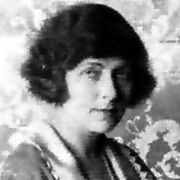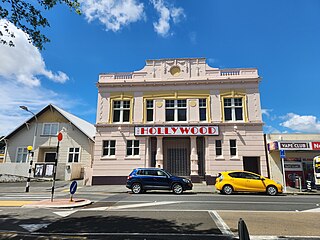Related Research Articles

New Zealand cinema can refer to films made by New Zealand-based production companies in New Zealand. However, it may also refer to films made about New Zealand by filmmakers from other countries. Due to the comparatively small size of its film industry, New Zealand produces many films that are co-financed by overseas companies.

The Moody Blues were an English rock band formed in Birmingham in May 1964. The band initially consisted of drummer Graeme Edge, guitarist/vocalist Denny Laine, keyboardist/vocalist Mike Pinder, multi-instrumentalist/vocalist Ray Thomas, and bassist/vocalist Clint Warwick. Originally part of the British beat and R&B scene of the early–mid 1960s, the band came to prominence with the UK No. 1 and US Top 10 single "Go Now" in late 1964/early 1965. Laine and Warwick left the band by the end of 1966, being replaced by guitarist/vocalist Justin Hayward and bassist/vocalist John Lodge. They embraced the psychedelic rock movement of the late 1960s, with their second album, 1967's Days of Future Passed, being a fusion of rock with classical music that established the band as pioneers in the development of art rock and progressive rock. It has been described as a "landmark" and "one of the first successful concept albums".

Mary, Lady Stewart was a British novelist who developed the romantic mystery genre, featuring smart, adventurous heroines who could hold their own in dangerous situations. She also wrote children's books and poetry, but may be best known for her Merlin series, which straddles the boundary between the historical novel and fantasy.

Susan Hayward was an American actress best known for her film portrayals of women that were based on true stories.

Christopher Percy Gordon Blackwell OJ is a Jamaican-British former record producer and the founder of Island Records, which has been called "one of Britain's great independent labels." According to the Rock and Roll Hall of Fame, to which Blackwell was inducted in 2001, he is "the single person most responsible for turning the world on to reggae music." Variety describes him as "indisputably one of the greatest record executives in history," while Barron's has described him as "a contender for most interesting man in the world."

David Justin Hayward is an English musician. He was the guitarist and frontman of the rock band the Moody Blues from 1966 until that group's dissolution in 2018. He became the group's principal vocalist and its most prolific songwriter over the 1967–1974 period, and composed several international hit singles for the band.

Seventh Sojourn is the eighth album by the Moody Blues, released in October 1972. The album reached No. 5 in the United Kingdom, and became the band's first American chart-topper, spending five weeks at No. 1 there to close out 1972.

Opo was a bottlenose dolphin who became famous throughout New Zealand during the summers of 1955 to 1956 for playing with the children of the small town of Opononi on the Hokianga harbour.
Rudall Charles Victor Hayward was a pioneer New Zealand filmmaker from the 1920s to the 1970s, who directed seven feature films and numerous others.

Moonrise Kingdom is a 2012 American coming-of-age comedy-drama film directed by Wes Anderson, written by Anderson and Roman Coppola, and starring Bruce Willis, Edward Norton, Bill Murray, Frances McDormand, Tilda Swinton, Jason Schwartzman, Bob Balaban, and introducing Jared Gilman and Kara Hayward. Largely set on the fictional island of New Penzance somewhere off the coast of New England, it tells the story of an orphan boy (Gilman) who escapes from a scouting camp to unite with his pen pal and love interest, a girl with aggressive tendencies (Hayward). Feeling alienated from their guardians and shunned by their peers, the lovers abscond to an isolated beach. Meanwhile, the island's police captain (Willis) organizes a search party of scouts and family members to locate the runaways.

The Betrayer is a 1921 Australian-New Zealand lost film from director Beaumont Smith about an interracial romance between a white Australian man and a Māori girl.
Rudd's New Selection is a 1921 Australian silent film directed by Raymond Longford based on the Dad and Dave stories by Steele Rudd. It is a sequel to On Our Selection (1920). The plot concerns the marriage of Dave Rudd and introduces a sister, Nell.

Rewi's Last Stand is the title of two feature films written and directed by pioneering New Zealand filmmaker Rudall Hayward: a 1925 silent movie, and a 1940 remake with sound. They are historical dramas, based on the last stand of Rewi Maniapoto at the Battle of Ōrākau.

On the Friendly Road is a 1936 film from New Zealand which told a story of New Zealand in the depression. It was made in and around Auckland, using local actors and locally-made cameras.
To Love a Maori is a 1972 New Zealand film about an interracial romance. It was the seventh and last feature from Rudall Hayward.

Patricia Rongomaitara "Ramai" Hayward was a New Zealand photographer, actor, and filmmaker who made films in five countries. Her film career began in 1940 when she co-starred in the historical movie Rewi's Last Stand, after meeting her future husband, legendary New Zealand director Rudall Hayward. The first Māori cinematographer, she spent three years making films in England with Rudall. Later the couple were the first to make English language films in China after the communist revolution.

Hilda Maud Hayward was a pioneering New Zealand filmmaker. She is considered the country's first female camera operator.

The Hollywood Cinema, also known as the Hollywood or the Hollywood Avondale, is a cinema and performing arts theatre in the suburb of Avondale, Auckland, New Zealand. Under different names and management, the business and the building evolved from the council-administrated Avondale Public Hall built in 1867. Following a name change and installation of a new frontage in 1915, the Hall was leased to Harry Empson, who showed movies in the venue from 1916 to August 1927 when he sold the business to Frederick William. In 1923 the original building was moved to the adjacent lot and a new venue constructed behind the frontage. Notwithstanding the challenges of providing talkie movies and competing cinemas in neighbouring suburbs, a succession of managers, including the family of Rudall Hayward, ran the picture theatre until 1966 when the business was acquired by Jan Grefstad, who named it the Hollywood Cinema. During Grefstad's time, the Hollywood was known for the weekly midnight showings of the Rocky Horror Picture Show and the installation of a Wurlitzer Organ. After Grefstad died in 2001, the business was managed by a family trust before being sold on the open market in 2015. As of 2024 it continues to host classic, cult, revival and marathon screenings as well as selected concerts and events.
The Te Kooti Trail is a 1927 New Zealand historic drama film about Te Kooti, based on a newspaper serial written by Frank Bodle. This silent film is described as New Zealand's first docudrama and was created by husband and wife team Rudall and Hilda Hayward.
The Bloke from Freeman's Bay is a 1920 New Zealand silent short comedy which was the first film from Rudall Hayward.
References
- 1 2 3 4 "My Lady of the Cave". NZ Feature Project. Archived from the original on 2 February 2013.
- ↑ "My Lady of the Cave". Ngā Taonga Sound & Vision. Archived from the original on 18 December 2020.
- ↑ Shelton, L. R. (1998). "Hayward, Rudall Charles Victor - Biography". Dictionary of New Zealand Biography. Hosted by Te Ara - the Encyclopedia of New Zealand. Accessed 18 December 2020.